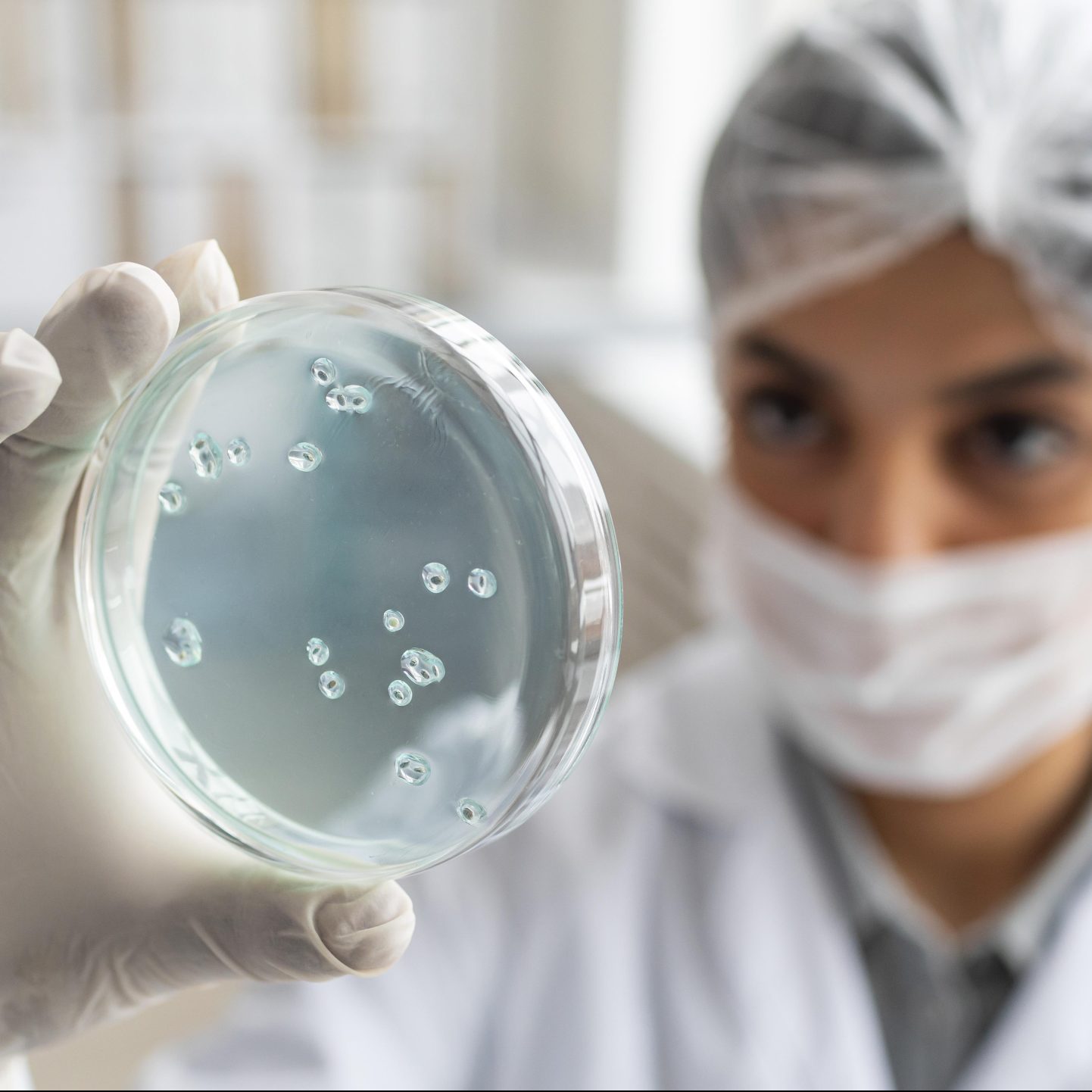The evaluation of the effect of dermocosmetics or active products on the skin microbiota is evolving into more and more complex models. And yet, these never reach the sophistication of the ecosystem of the bacterial biofilm of the skin. In addition, it is now known that the skin microbiome is subject to intra-individual variations depending on the body areas and inter-individual according to genetic, intrinsic, and environmental factors.
A complex ecosystem deeply linked to the skin homeostasis
Maintaining the delicate balance of diverse bacteria on healthy skin is vital for its equilibrium. Scientific advancements, such as 2D or 3D models, have helped address skin issues like acne or dermatitis, contributing to skin biology and microbiology knowledge. However, defining an ideal skin microbiota faces challenges due to its vast variability influenced by urban lifestyles and hygiene practices.
The continuous interaction between microorganisms and skin cells maintains skin immunity and a healthy barrier, crucial in conditions like Atopic Dermatitis. Cosmetics play a role in preserving the skin’s diverse bacterial balance, aiding fragile skin to restore its natural biofilm.
Interest in the skin microbiota has surged, paralleling the attention on the intestinal microbiota. Understanding how cosmetics affect the skin’s bacterial ecosystem has become a significant concern given the vast number of bacteria in our bodies.
The skin’s microflora, influenced by environmental and lifestyle factors, contributes to skin homeostasis and immune functions from the epidermis to the dermis, forming a unique, stable microbial footprint.
A paradoxical interest of the beauty consumers for the cutaneous microbiome
A 2021 study by The Benchmarking company revealed growing consumer concern among Americans regarding skincare and its relation to their skin microbiota. While 21% are aware of microbiome-specific skincare, a staggering 93% haven’t purchased such products. Most consumers (87%) understand the microbiome as a collection of microbes (good and bad bacteria) residing on the body, skin, and hair.
Perceptions suggest that probiotic skincare benefits include balancing skin pH, eliminating acne-causing bacteria, containing live bacteria combating ‘bad’ bacteria, maintaining a balanced microbiome, and creating a protective skin barrier. However, the lack of well-defined regulations for probiotic skincare, integrating live or non-viable bacteria, poses a significant challenge for cosmetics chemists. Microbiome-friendly claims should prioritize microbiota diversity, avoiding contamination and maintaining the skin’s balance.
Microbiome claims, the era of a new revolution for the cosmetics?
Cosmetics are still in early stages when it comes to supporting skin microbiota. Many labs explore these claims through metagenomics. Understanding skin flora and its interactions with skin metabolism is complex. Analyzing bacterial genome unveils this living skin layer, akin to discovering a new body continent.
Skin microbiota isn’t part of the epidermis but acts as a resident forming a biofilm, maintaining skin conditions, regulating inflammation, and shielding against environmental stress. Disorders like acne, eczema, or atopic dermatitis stem from bacterial imbalances. Cosmetics aim for three key benefits: rebalancing, probiotic-like effects, and antimicrobial properties.
Regulatory compliance is vital; personal care targeting skin microbiota must be safe per EC 1223/2009, including only approved prebiotics, probiotics, and postbiotics. Brands should ensure no toxins are produced by microorganisms in their formulas. Claims for “skin microbiota” care mustn’t mislead consumers and are limited to maintaining skin health, not altering epidermal processes. Products can support or protect the microbiota but can’t claim to stimulate, boost, reduce, or improve its diversity, despite higher diversity being associated with better skin hydration and reduced infections.
Probiotics’ anti-aging effects increasingly show benefits like increased skin water content, elasticity, gloss, reduced transepidermal water loss, and decreased wrinkle depth.
How to evaluate cosmetics activity on the skin microbiota?
Evaluating cosmetics’ impact on skin microbiota requires complex protocols due to the vast intra-individual diversity and high inter-individual variability. Swabbing skin areas pre and post-treatment aids in studying microbiota changes. DNA extraction, 16S-rRNA amplification, and sequencing facilitate understanding the skin’s microbial composition and its functions. Various evaluation methods, like metagenomics and metaproteomics, measure the effects of cosmetics on microbiota diversity and functions.
Interpreting such data necessitates expertise in data treatment, bioinformatics, and skin biology. The young discipline of skin microbiome research faces challenges due to its complexities, impacting sampling, follow-ups, and understanding lifestyle influences. To advance, industry-wide guidelines and pre-formulation testing for microbiome impact in cosmetics are crucial.
Skin, a hostile yet diverse environment for bacteria, hosts around 1,000 bacterial species, impacting various physiological functions. Understanding skin bacteria’s role via functional analysis and dedicated protocols using mass spectrometry proteomics is essential.
Optimal cosmetic results involve fostering skin’s natural balance rather than stressing it with aggressive chemicals. Different body parts have distinct microbiomes, prompting varied testing standards. Biometrological methods assess microbiome-related cosmetic claims like pH balance, hydration, and barrier function. The Skinobs Clinical Testing platform offers methods for specific claims.
The future of skin microbiota evaluation
The skin microbiota’s ideal composition isn’t fixed due to varying lifestyles and environments. A wide array of microbiota species contributes to good health amidst substantial inter- and intra-individual variations. This bacterial ecosystem synthesizes crucial elements for skin health, prompting the need to protect, rebalance, and activate it through cosmetics. Balancing “bad” and “good” bacteria is a complex task, dependent on the skin’s physiological state. The future of cosmetics involves leveraging microbiota for personalized and preventive care. As regulations and product development evolve, understanding the skin flora’s diversity and balance will be pivotal. Perhaps, in the future, assessing a product’s impact on the microbiota before its market launch could become standard practice.
👉 Discover the array of articles dedicated to the microbiome on Skinobs Testing News: click here









 Follow us on Linkedin!
Follow us on Linkedin!